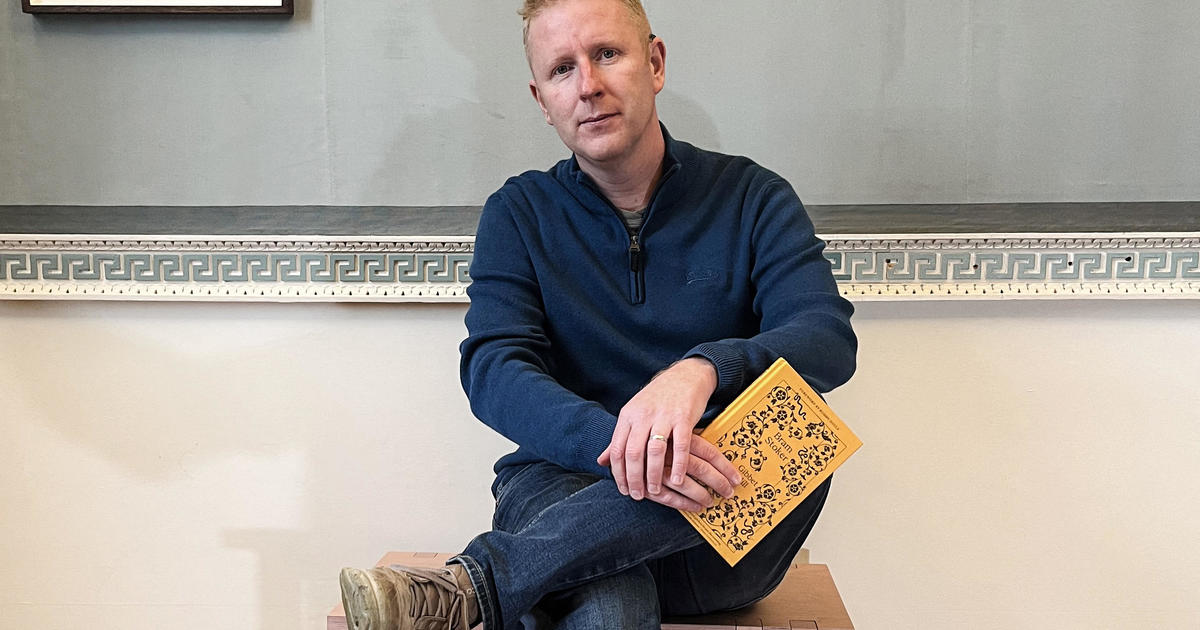Bram Stoker, renowned author of the iconic vampire novel Dracula, had his work unexpectedly expanded with the rediscovery of a previously unknown short story, “Gibbet Hill.” This thrilling tale, unearthed after over 130 years of obscurity, offers a fascinating glimpse into Stoker’s creative process and the evolution of his writing style leading up to his masterpiece. Brian Cleary, a Dublin-based writer and amateur historian, stumbled upon the story during a visit to the National Library of Ireland, triggering a chain of events that brought “Gibbet Hill” back into the light and into the public eye, celebrating both the dedication of historical researchers and the vast, hidden treasures within archives. The unexpected discovery highlights the power of archival research and its potential to unveil previously unknown literary works.
The Rediscovery of “Gibbet Hill”
A Serendipitous Find in the Archives
Brian Cleary, a self-described admirer of Bram Stoker’s work, initially embarked on his research journey due to a sudden hearing loss, requiring cochlear implant surgery. During his leave from work, Cleary revisited his interest in historical literature and specifically delved into the work of Bram Stoker. In October 2023, while browsing through the National Library of Ireland’s newspaper archives, he stumbled upon a Christmas supplement of the Dublin edition of the Daily Mail from 1890, a supplement containing a previously unknown short story. This chance encounter, sparked by a change in his personal circumstances, completely shifted his focus. His initial disbelief quickly turned into excitement as he realized the potential significance of his discovery. He meticulously examined the text, cross-referencing details and verifying the story’s authenticity before making a monumental announcement.
Verifying Authenticity and Significance
The discovery of “Gibbet Hill” wasn’t simply about locating an old text. Cleary engaged in comprehensive literary research and consulted Stoker experts, meticulously verifying its authenticity as a lost piece of Stoker’s writing. His methodical approach reassured that the discovery wasn’t an accident, but a meticulous process to verify what he discovered was genuine. The discovery was further validated by expert opinion from leading Bram Stoker scholars and biographer Paul Murray who confirmed the story was previously undocumented and thus genuinely ‘lost’. This collaborative effort elevated the importance of the find beyond a simple lucky discovery, confirming it was a lost treasure trove. The collaborative effort underscores the importance of expert verification and critical evaluation when approaching such literary discoveries.
“Gibbet Hill”: A Glimpse into Stoker’s Development
The Story’s Macabre Narrative
“Gibbet Hill” presents a classic Stokerian narrative centered on the macabre. The short story unfolds the tale of a sailor who was brutally murdered by three criminals, whose bodies are subsequently hanged from a gibbet on a hill as a grim warning to passing travelers. The elements of the story create the typical mysterious atmosphere in typical Stoker style that draws in readers. This eerie and unsettling atmosphere underscores its importance to understanding Stoker’s distinct literary style before his breakthrough work of Dracula, highlighting that same dark and foreboding tone. The macabre detail is typical of Stoker and even prefigures the atmospheric suspense seen in his later works.
Its Significance to Stoker’s Canon
The discovery of “Gibbet Hill” holds exceptional significance in the context of Stoker’s literary evolution. Written around 1890, it represents a vital stage in his development as a writer, directly predating the initial notes and planning for “Dracula.” It provides valuable insights into the writer’s nascent themes and stylistic choices, showing thematic explorations which eventually came to characterize the legendary vampire novel. Analyzing “Gibbet Hill” offers a rare look at how Stoker refined his writing, developed his signature macabre storytelling techniques, and cultivated his penchant for eerie atmospheres.
Celebrating the Discovery
The Exhibition and Book Publication
The momentous rediscovery has inspired numerous celebratory initiatives, including a dedicated exhibition in Dublin that features a collection of art inspired by the unearthed short story. The display captures the excitement around this literary resurrection showcasing the collaborative process from historical research, artwork creation, and final display to make it an interesting discovery. The exhibition underlines how the public and academics can combine to unearth previously hidden cultural artifacts. The artwork further elevates the celebration of Stoker’s story adding elements of the eerie story to captivate the audience with a visual interpretation of Stoker’s imagery.
Artist’s Inspiration and Interpretation
Irish artist Paul McKinley’s unique illustrations capture the ominous tone and themes of “Gibbet Hill”. His works range from vivid scenes portraying the gibbet and hanging criminals, offering interpretations of characters through to a depiction of worms – mirroring details mentioned within the story – which showcase how various pieces of the unearthed literary treasure can be illustrated to generate greater public awareness of this forgotten work. McKinley’s interpretation of the narrative offers the reader a fresh, visual approach to how they perceive the tale through artwork adding an emotional approach to the story compared to a solely narrative approach.
Takeaway Points
- The rediscovery of “Gibbet Hill” is a testament to the importance of archival research and the power of chance discoveries.
- The story offers invaluable insights into Bram Stoker’s literary development prior to the publication of Dracula.
- “Gibbet Hill” highlights the enduring appeal and enduring power of gothic literature.
- The accompanying artistic interpretations bring new life to Stoker’s work, demonstrating the value of interdisciplinary collaboration.
- The celebration surrounding the discovery shows the impact that unearthed literary gems can have.









